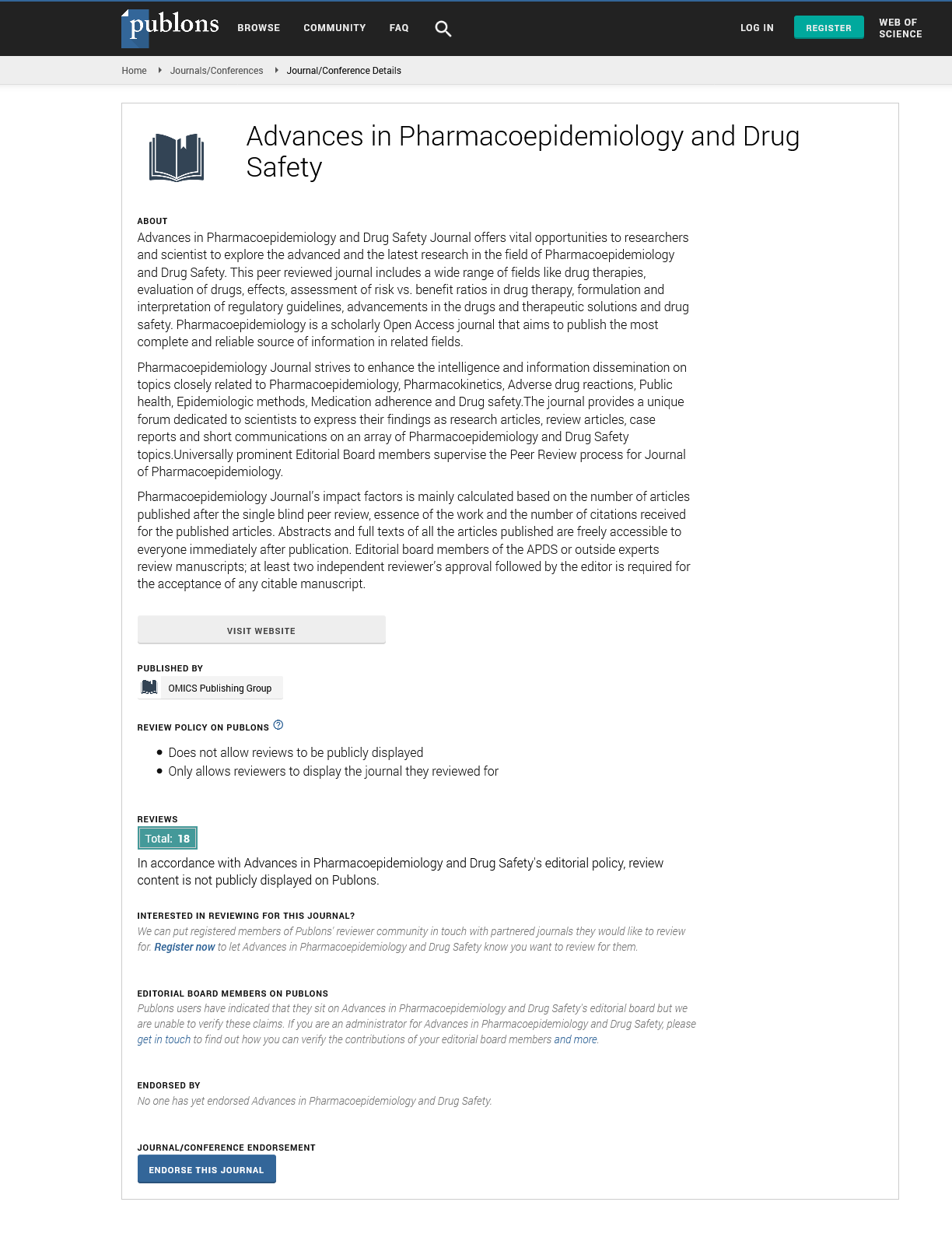Indexed In
- Open J Gate
- Genamics JournalSeek
- Academic Keys
- JournalTOCs
- RefSeek
- Hamdard University
- EBSCO A-Z
- SWB online catalog
- Publons
- Geneva Foundation for Medical Education and Research
- Euro Pub
- Google Scholar
Useful Links
Share This Page
Journal Flyer

Open Access Journals
- Agri and Aquaculture
- Biochemistry
- Bioinformatics & Systems Biology
- Business & Management
- Chemistry
- Clinical Sciences
- Engineering
- Food & Nutrition
- General Science
- Genetics & Molecular Biology
- Immunology & Microbiology
- Medical Sciences
- Neuroscience & Psychology
- Nursing & Health Care
- Pharmaceutical Sciences
Perspective - (2022) Volume 11, Issue 6
Types of Drug Interactions and their Uses
Robert M Straubinger*Received: 27-Oct-2022, Manuscript No. PDS-22-18788; Editor assigned: 31-Oct-2022, Pre QC No. PDS-22-18788 (PQ); Reviewed: 15-Nov-2022, QC No. PDS-22-18788; Revised: 22-Nov-2022, Manuscript No. PDS-22-18788 (R); Published: 29-Nov-2022, DOI: 10.35248/2167-1052.22.11.283
Description
Medicines help us feel better and stay healthy. However, sometimes drug interactions can cause problems. There are three types of drug interactions. Drug Interactions: Reactions between two (or more) drugs. Drug-Food Interaction: Reactions between drugs and food or drink. Drug-Condition Interactions: Reactions that occur when drugs are taken in the presence of certain medical conditions. For example, taking nasal decongestants for high blood pressure can have side effects. Drug interactions involve combining a drug with other substances that alter the drug's effect on the body. This can cause medicines to act less or more than intended or cause unexpected side effects. Be careful with the medications also make sure each doctor is aware of all the medicines, herbs, supplements, and vitamins they use.
Drug interactions occur when one drug interacts with another drug. Certain drugs are more likely to interact with each other than others. For example, all kinds of drug interactions can become serious. So it's hard to pick one as "most dangerous". Drug interactions can be serious if not controlled, but can usually be limited or avoided if precautions are taken. It is an anticoagulant used to prevent blood clots. It interacts with many other drugs. This is because a group of enzymes (called CYP450 enzymes) alter the way warfarin is metabolized. Drugs that block these enzymes can make warfarin more effective and increase the risk of dangerous bleeding. Drugs that induce enzymes make warfarin less effective and increase the risk of blood clots.
These potentially dangerous health effects highlight the importance of discussing new drugs with our doctor or pharmacist. Additively: When the effects of two drugs given in combination are equal to the mathematical sum of their effects when given alone. Synergy: When the combined effect of two drugs is greater than the sum of their effects when administered separately. Augmentation: When a drug does not produce a response by itself, but increases the response to another drug. Drug interaction example includes response to 4 drugs, where drug A=0 units response, drug B=3 units response, drug C=5 units response, drug D=10 units response. It's hard to pick one as "most dangerous".
Drug interactions can be serious if not controlled, but can usually be limited or avoided if precautions are taken. Over-The- Counter (OTC) drug labels contain information about ingredients, directions for use, warnings, and instructions that are essential to read and understand. The label also contains important information regarding potential drug interactions. Additionally, drug labels may change as new information becomes available. Therefore, it is especially important to read the label each time will use any medicine. Talk to the doctor or pharmacist about any medicines will use to start. If the doctor prescribes a new drug, discuss all over-the-counter and prescription drugs, dietary supplements, vitamins, botanicals, minerals, herbs, and foods to eat. Ask the pharmacist for the package insert for each prescription drug for take. The package provides more information about potential drug interactions.
Citation: Straubinger RM (2022) Types of Drug Interactions and their Uses. Adv Pharmacoepidemiol Drug Saf. 11:283
Copyright: © 2022 Straubinger RM. This is an open-access article distributed under the terms of the Creative Commons Attribution License, which permits unrestricted use, distribution, and reproduction in any medium, provided the original author and source are credited

